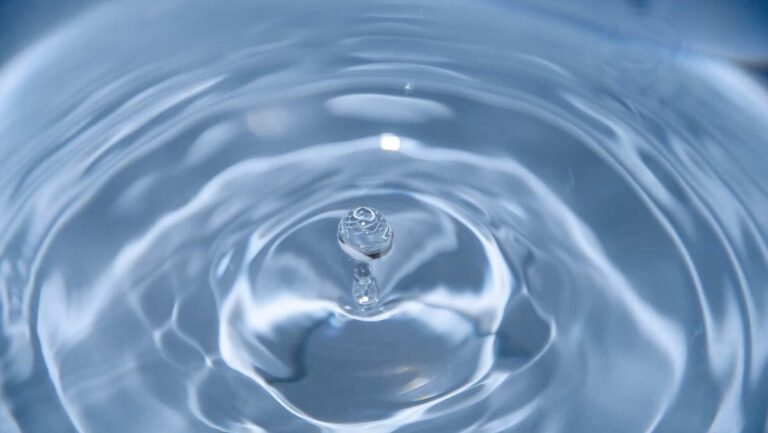Pollution is a very trendy topic these days, as it should be: we should all care about our footprint on the ecosystem. But we are often not fully aware of the gravity of the situation. In this article we will see what the main sources of water pollution are, in particular the pollution of surface waters, including lakes.
Table of Contents
What are the main causes of lake pollution?
If we happen to go on holiday near a lake, we also happen to see some empty bottles floating, or a plastic bag flying here and there. But the real dangerous pollution is what you can’t see. The surface waters of lakes have been polluted for a long time by chemical agents such as:
- pesticides;
- insecticides;
- heavy metals such as lead, mercury, asbestos and others;
- nuclear waste.
From here we already understand that the situation is truly serious. In the past decades the lakes have accumulated a series of waste and toxic substances that have not yet been disposed of. These substances take a truly enormous amount of time to degrade and in the meantime cause toxic inhalations and pollution of the aquifers.
Pollution of groundwater is very dangerous and can cause diseases such as cholera, jaundice, typhoid, viral hepatitis and salmonellosis. This is not yet that far from us as a reality. In the developing countries of Africa and Asia, in fact, these diseases are still frequent and are still a threat to populations who are unable to cure themselves.
The most polluted lakes in the world
Let’s start with an overview of lakes polluted in a disturbing way. We will see lakes full of toxic substances thrown into their waters without hesitation. Lakes polluted by radioactive waste. And lakes polluted due to gross mistakes made by industries.
Lake Karachay (Russia)
Lake Karachay is located in the Urals, more or less 150km from Yekaterinburg. Near the lake stands the Mayak Production Association, a laboratory containing nuclear plants. The laboratory was kept hidden by the Soviet government until 1990. It was in fact an important military strategic point where, among other things, experiments were carried out.
In 1990 it was discovered that by soaking your feet in the lake for around 60 minutes, you absorbed an abnormal amount of radiation: 600R (röntgen, unit of measurement of radiation) is capable of killing a human being.
Why is it so radioactive? Because in 1957 the third worst nuclear disaster took place after Chernobyl and Fukushima. 100 tons of radioactive waste were released into the ground and into Lake Karachay. This disaster caused a 21% increase in the incidence of cancer in nearby populations, a 25% increase in birth defects in newborns and a 41% increase in leukemia.
Geamana Lake (Geamana village, Romania)
This lake is truly a surreal panorama. At first glance it is very fascinating, full of colors between orange, blue and green. What it hides is quite disturbing. In the 1970s, the inhabitants of the village of Geamana were forced to leave their homes, since the presence of a truly large copper deposit (the second in Europe) was discovered.
The mine is called Roșia Poieni, 484km from the Romanian capital Bucharest and is still in operation. What’s the problem? To extract copper and “dissolve” the stone, cyanide is used together with other corrosive substances. The resulting liquid is a liquid from which copper is obtained through electrolysis, with the addition of sulfuric and cupric acid.
The remains of this process were channeled into a dam. However, the toxic substances were deposited on the valley floor, causing constant pollution of Lake Gaemana. The colors of the lake are due to the oxidation of heavy metals present within the waters, including cyanide.
Lake Baikal (Russia)
Lake Baikal is located in the southern part of Siberia. It is part of the Seven Wonders of Russia and is protected by UNESCO. It is the deepest lake in the world and its transparent waters allow a glimpse of the ground up to 40m deep. Despite the transparency of its waters, the purity of this lake has been put at risk several times.
Since the 1970s, initiatives have been planned by the government which have certainly not benefited this lake. First the project for the construction of the Baikal-Amur railway, then the construction of a wood processing plant and cellulose processing a few meters from its banks and finally the discharges of the Ulan-Udė industries across the Selenga River.
In Lake Baikal there is an explosion of non-natural algal blooms, therefore atypical for the lake’s ecosystem. It is caused by the runoff of waste water, where there are detergents with phosphates responsible for the growth of these algae (the fault of the cities).
Half a billion euros have been spent by the government from 2012 to today. But this attempt to remedy the disaster that has now occurred and is too large has literally been of no use.
Onondaga Lake (United States)
Onondaga Lake is located in New York state. It is considered one of the most polluted lakes in the United States. This region where the lake extends was colonized by European emigrants, who settled in the city of Syracuse where, among other things, the salt extraction industry took hold.
This industry allowed waste to flow into the lake, which slowly accumulated high levels of sodium, calcium and chlorides of various kinds. What made the situation worse were the Syracuse sewers that flowed directly into the lake, releasing phosphorus, nitrites and ammonia. Finally, chemical industries have caused an extreme increase in mercury in these waters.
This lake was also once a bathing spot that featured a playground on the shore. However, in the 1950s the lake smelled so intense and acrid that passers-by had to close their car windows. There is now a water purification project underway which is having good results.
The Aral Sea (Uzbekistan-Kazakhstan)
The Aral Sea has undergone an intense process of water decline, to the point that it was first divided into two smaller basins to the north and south, until its almost total exhaustion. This is due to the abuse that has taken place over the decades of this water source for the unregulated production of cotton, but not only.
Starting in the 1940s, the Soviet Union built a series of canals to collect water from the two rivers that flowed into the lake. Why? All this in an attempt to reclaim the desert for the cultivation of rice, cereals and cotton.
These canals were poorly made and allowed water to evaporate and seep. It is estimated that the main Karakun canal wasted 30% to 75% of the water that passed through it. In 2007, the lake was only 10% of its original size and its salinity exceeded 100g per litre. Seven years later, in 2014, the eastern basin was completely dry.
Read also: Ecological disasters: the top 10 most polluted rivers in the world












